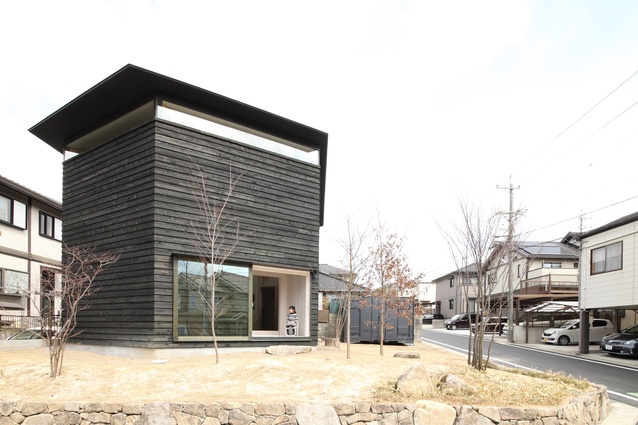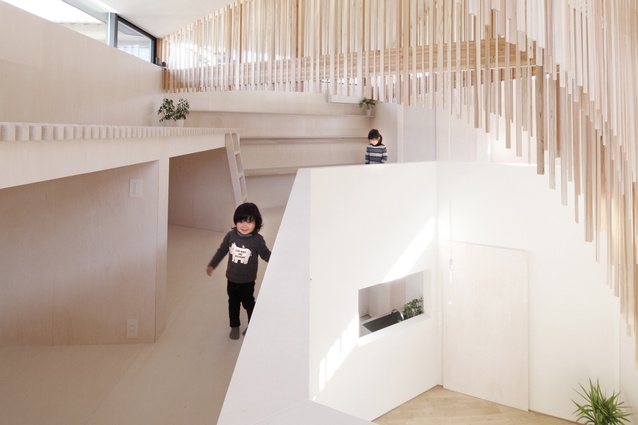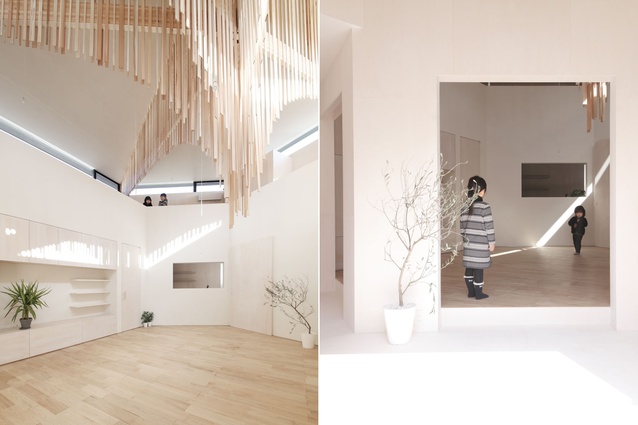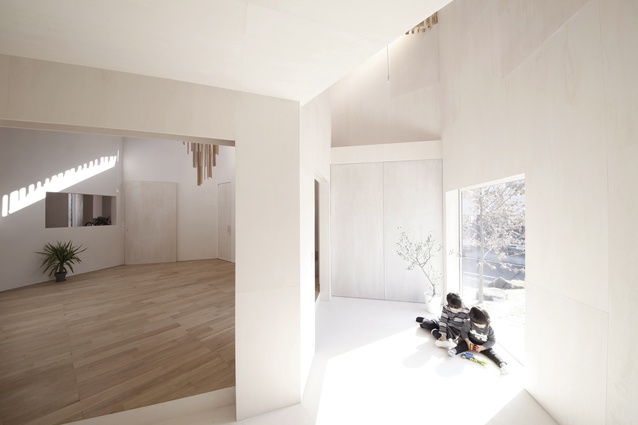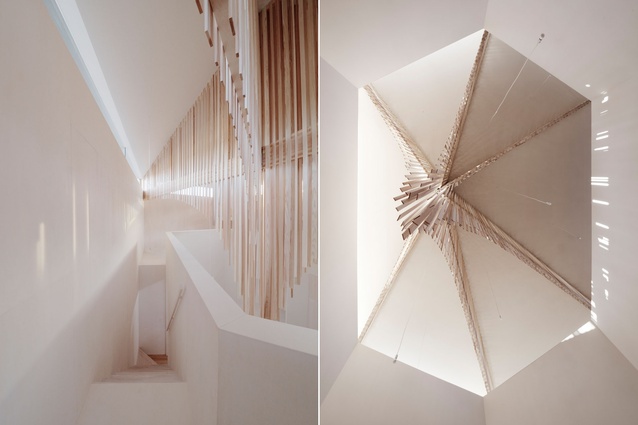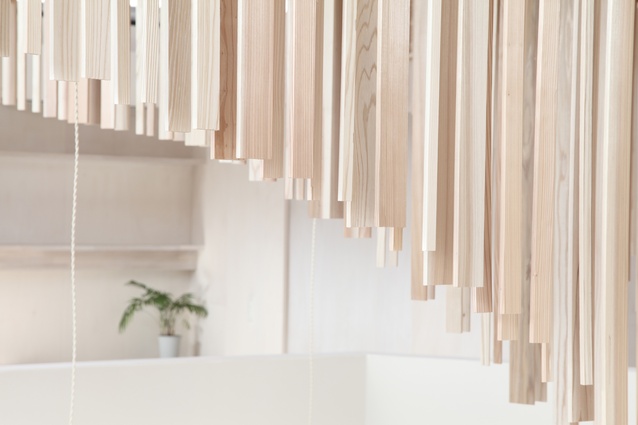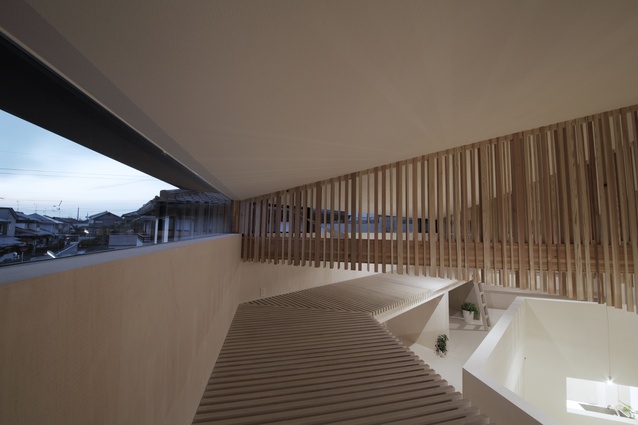Hot House: Koro House
The Japanese word koro roughly translates to time. And it is its passing that creates the most striking feature of this abode, known as the Koro House.
Hanging from the ceiling above the lounge and expanding well into the second floor of the home is a sculptural piece made out of hundreds of thin wooden slats of varying lengths. They are arranged equidistant from each other and attached directly onto hidden rafters (six internal radii that originate from the home’s hexagonal shape); their lengths decrease the closer they are to the walls and the longest pieces seem to drip right into the living room.
“It is not a sculpture,” insists the home’s architect, Katsutoshi Sasaki from Katsutoshi Sasaki + Associates. “It’s a reflector for light.”
The idea is that the sun’s trajectory and its corresponding brightness as it filters through the clerestory windows, which wrap around the top of the building, will activate a game of light and shadow with the slats and onto the lauan plywood walls. The slats diffuse much-needed sunshine (there are few windows in the house, thanks to its proximity to other townhouses and passing traffic) into various alcoves while, at the same time, projecting what one can describe only as a daily, silent film about circadian rhythms.
So, regardless of the architect’s utilitarian aspirations for the house, this reflector for light incites ethereal allusions: Tadao Ando’s Church of the Light; and Shinto and Buddhism’s reverence for the accidental beauty of natural processes. Sasaki says his client (a chiropractor who lives in the home with his wife and three young children) had only one request when he commissioned the house to be built in 2013 – to be excited by the space. The sculptural sundial was Sasaki’s way to try and expand the “mind and sensibility” of his client.
Although the rest of the house is relatively pared back, several moments of disarming simplicity, proportion and minimalist puzzlement can be found. The Koro’s 68m² footprint is, unusually, that of an irregular hexagon. Its façade is simple, unadorned and composed of dark, stained-wood weatherboards whose pattern is interrupted only by thin, metal awnings above the square main entrance and the clerestory windows. It sits atop a small mound – dotted with strategically placed cherry trees – on the corner of two nondescript suburban streets in the coastal city of Toyota (320km south-west of Tokyo). Cabinetry and shelving opt for discreetness rather than ornamentation and, except for bathrooms and the main entry, there are no interior doors (the bedrooms are open to the main living space).
The second floor, which is almost entirely reserved for the children, includes three sleeping areas so small (1mX1mX5m) they could be confused for storage spaces. There is a small ladder that the kids can use to climb atop their miniature chambers (a place the architect calls a “loft”). If some of these features sound unusual, they are, at least, consistent with Sasaki’s ouvre, which includes Ogaki House (shaped like a perfect triangle) and Imal (a 21m-long by 3m-wide, two-storeyed home). And, judged within the ecosystem of contemporary Japanese residential architecture, the Koro’s spatial quirks are even more fitting.
Alastair Townsend, a Tokyo-based architect and writer, created a splash last year when he explored the freakonomic and cultural conditions that are causing so many young, local architects to design wild, avant-garde homes. Townsend cited the local fascination with newness, the rapid devaluation of residential properties and the ephemeral nature of these constructions (they are, typically, taken down after 25 to 30 years) as reasons why Japanese architects are taking such flights of fancy.
Whether the Koro fits these cultural parameters of religion and economics remains to be seen. Regardless, this house manages a silent beauty through a simple, well-crafted and imaginative solution to accommodate light and privacy into a miniature site.


